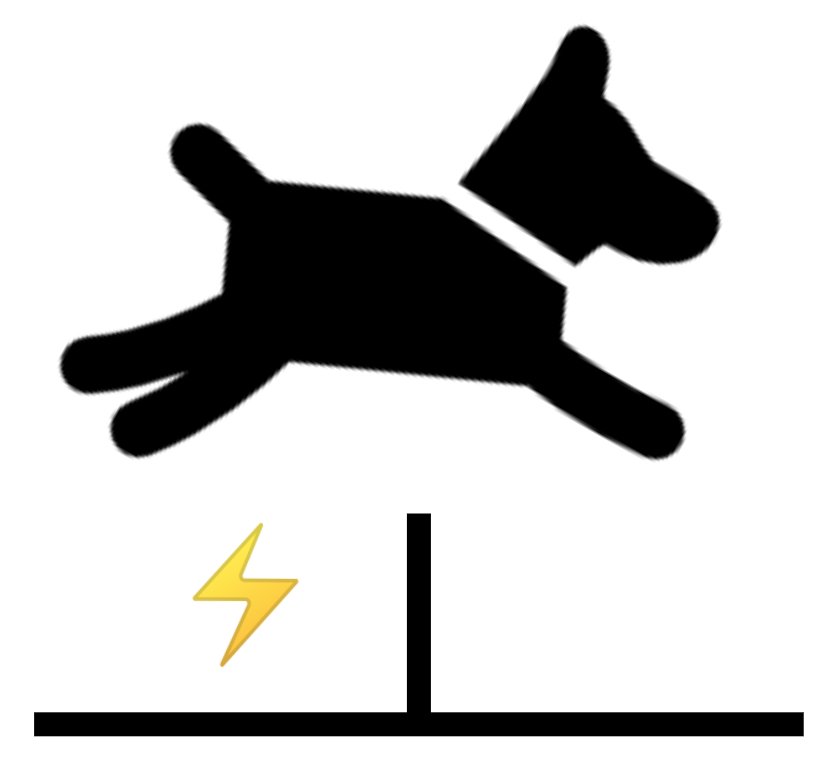When bad things repeatedly happen, we may come to think they are unavoidable. And when we feel like we have no agency over our situation, we may begin to behave in a helpless way. Learned helplessness is a mental state that occurs after someone has experienced a stressful situation so many times, they believe they are unable to avoid or control the situation, so they don’t even try—even when opportunities for relief arise. This behaviour is found in both humans and animals.
It can lead to low self-esteem, low expectations of success, low motivation, less persistence, and an inability to ask for help. The good news is: there are ways to overcome learned helplessness.
The discovery of learned helplessness
In 1967, American psychologist Martin Seligman started his research on learned helplessness as an extension of his research in depression. He conducted a seminal animal study where he discovered the phenomenon of learned helplessness. (warning: the experiment is quite shocking)
In the first part of the experiment, three groups of dogs were placed in harnesses.
- Group 1 were put in a harness for some time then later released.
- Group 2 and 3 were paired together. The dogs in Group 2 received random electric shocks, which they could end by pressing a lever. Whenever a dog from Group 2 would get a shock, the paired dog from Group 3 would get a shock of the same intensity and duration, but their lever did not stop the shock.
For dogs in the last group, the shocks seemed to end at random. They had no control over it, and it felt inescapable.
In the second part of the study, dogs from the three groups were placed in boxes with two sections, one with electric shocks, the other without. While dogs from the first two groups quickly learned to jump to the section without electric shocks, the dogs from the last group passively laid down and whined whenever they received a shock. (I warned you, the experiment is literally shocking)
To help them overcome their learned helplessness, the researchers tried threatening the dogs, rewarding them, and even demonstrating how they could jump over the safe section of the box to avoid electrical shocks, but nothing worked.
The only cure they found was to physically pick up the dogs and move their legs to replicate the actions of the dogs from the first two groups who had jumped over the safe section of the box. The researchers had to move the dogs in this manner at least twice before they started jumping to safety of their own accord.
Since then, learned helplessness has been observed in other animals as well as humans. Children who perform poorly on maths assignments will come to believe there is nothing to do to improve their performance. People who struggle to manage their weight may feel like there is no way they can get in better shape. Job-seekers who get repeatedly rejected when they apply for work may lose hope.
How to unlearn helplessness
The key to overcoming learned helplessness is to change the way you look at the causes of events in your life. This is what psychologists call your “attributional” or “explanatory” style. It’s based on three key pillars.
- It’s not personal. Who is responsible for the situation? In learned helplessness, we tend to attribute events to internal causes (“I failed this exam because I’m terrible at maths”) rather than external causes (“I failed this exam because I didn’t have access to the support I needed”).
- It’s not permanent. How long is the situation likely to last? Instead of a permanent outlook (“I’m bad at public speaking”), psychologists encourage us to shift to a temporary outlook (“I wasn’t comfortable during this presentation because I didn’t know the material very well, I will practice more for my next presentation”).
- It’s not pervasive. Is the situation consistent across all environments, or specific to one environment? A global statement (“I don’t like travelling”) can foster a fixed mindset, while local statements (“I didn’t enjoy this particular trip”) mean things can be better in a different context.
Research suggests that increased levels of serotonin in specific parts of the brain play an important role in learned helplessness. Perhaps surprisingly, one of the most efficient ways to overcome learned helplessness is exercise. Exercise is an effective, safe, and healthy way to increase levels of serotonin in the brain. In animal studies, researchers found that exercising on a running wheel prevents learned helplessness in rats.
By changing your explanatory style to understand that negative situations are often not personal, not permanent, and not pervasive, we can start overcoming learned helplessness. And for an extra boost in optimism, a bit of exercise can go a long way.

